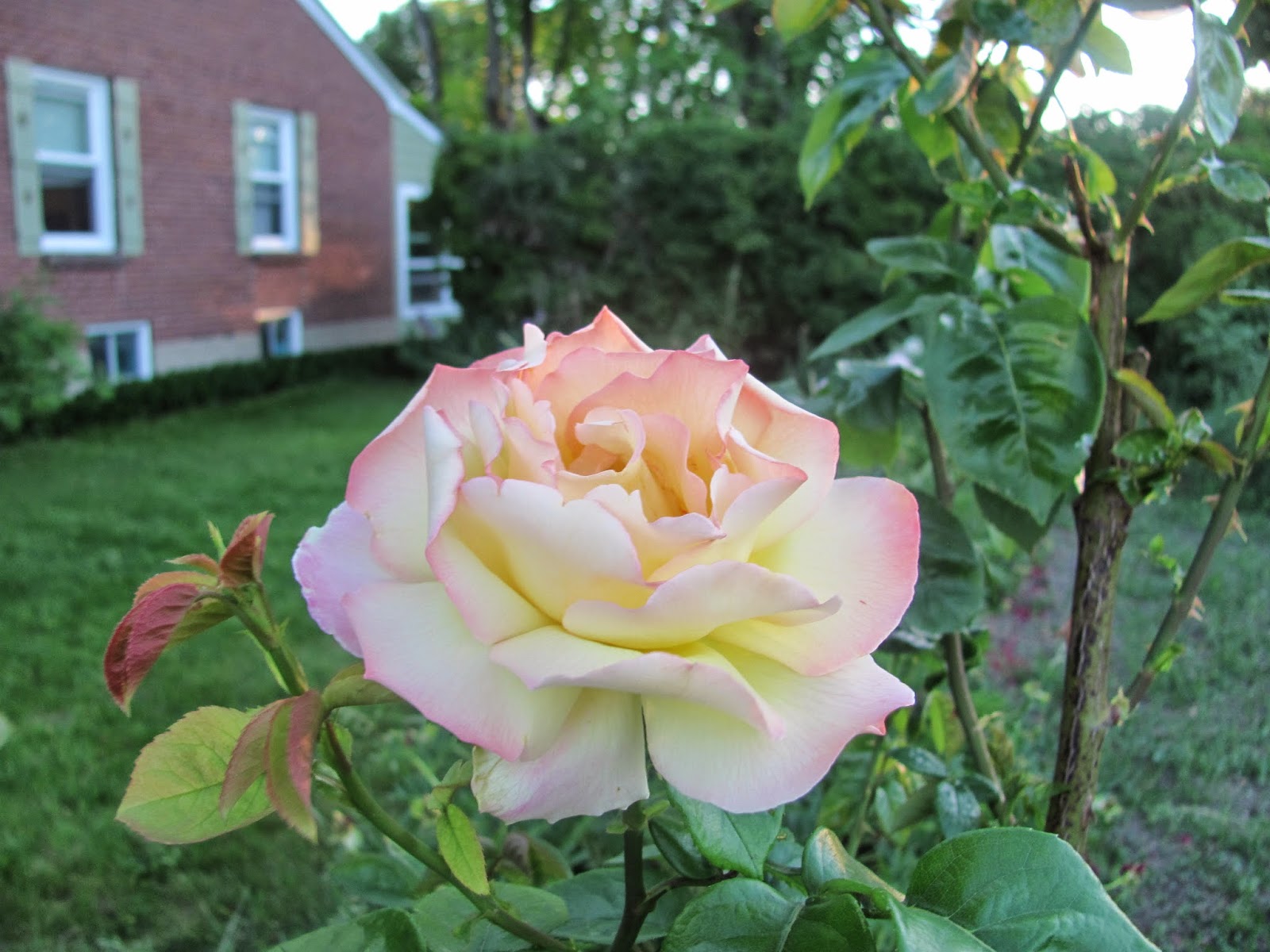For some time now, I've wanted to write a few thoughts about women's roles in the LDS Church, being a Mormon woman, growing up Mormon in Utah, and the stereotypes that surround all of these things.
Let's start with the last: Many people believe that Utah Mormons are the most sheltered people in the world. Yes, there are people who live in communities surrounded by actively participating and religious Mormons. These places exist in some towns or neighborhoods in Utah. My hometown was not one of those places. I have m any friends who grew up in different cities or small towns throughout
Utah. Most of them had good friends who
were LDS; even those who grew up faithful had traumatic experiences
with friends or family. Some have parents or siblings with mental
illness. Financial struggles, marital
hardships, abuse, abandonment by a parent, or drug addiction within the family are realities in the lives of Utah Mormons.
These people are not ignorant. They are diverse.
In seventh grade I became friends with a girl who was outgoing, fun, thoughtful, and sexually active. This was 1990. She wasn't the only person at my junior high who was having sex, either. I didn't think a lot about it at the time since most of us feel rather mature at age twelve. But I look at my nine-year-old daughter now and think,
I was a baby. I was a baby who didn't understand any of the implications of sexuality, even though I knew how sex worked, I understood moral and health consequences of sex, and I even understood that people like the feeling of sex. What I didn't realize--until much later--is that sex matters. That a twelve-year-old who has sex is likely to suffer from all kinds of mental and emotional damage. I didn't put together that the older guy (was he fifteen or sixteen?) who was having sex with my friend was taking advantage of her inexperience.
I was fourteen the first time my friend's brother offered me a joint. Fortunately, I had already decided that I wasn't supposed to use drugs; it wasn't part of my destiny, so to speak. Throughout my teenage years I was surrounded by drugs and alcohol: friends were trippin' on acid while I fell asleep in the other room, joints were lit and passed while the small cluster of the sobers chilled in the backyard, alcohol was served while I went on walks with other people. This was in the heart of Utah Valley. Many of my friends who grew up outside of Utah were excused from drugs and alcohol because they were Mormon. People never even asked. My greatest fear in raising children in Utah is that being Mormon isn't enough. Most of the kids who were getting high had grown up LDS. I had conviction that drugs weren't my thing, and I hope and pray for the same conviction in my own children.
I think of my twleve-year-old niece who bore her testimony a couple of months ago. She had never stood before the congregation before or borne her testimony aloud, but she gave such a powerful, miraculous testimony. She had gone to church that morning with a good friend of hers who attends a non-denominational Christian church. Apparently, her friend has pressured her to "quit being Mormon" and go to her church. This is a church where people come in jeans and they play guitars and drums during worship. Frankly, this is an atmosphere most twelve-year-olds would consider cool. But my niece said, "I am not going to give up my beliefs. I am going to stay Mormon." She has a genuine testimony amidst the pressure. I hope my own children can say the same thing.
****
Misconceptions about Mormon women aren't new. From the earliest establishment of the LDS Church, slanderers have claimed Mormon women are repressed, oppressed, abused, and ignorant. I am not going to make any blanket statements about what or who Mormon women are. First of all, Mormon women span the entire globe and live and thrive on every populated continent. Mormon women are Nigerian, Indian, Czech, Peruvian, Australian, Japanese, Mexican, Croatian, English, Brazilian, Jamaican, American, Kenyan, Argentine, German, Thai, Samoan, and almost a hundred other nationalities.
We are not all the same. I am not even the same as the women with whom I attend church each week. But we are not all completely different either. Here are some of our commonalities:
We believe in Jesus Christ as our Savior.
We believe in the Restoration of the Gospel.
We believe in living prophets and modern revelation.
We also belong to the oldest and largest women's organization in the world, the Relief Society. We are committed to service, uplifting those in need, sharing our talents and time, and growing personally and spiritually. Some women may think that service and relief as a code of a women's organization is backward. But, that's only because our society has devalued charity. We have devalued domesticity. We have devalued cooperation. We have devalued community. We have traded these things for personal ambition, career, personal gain, and extreme individuality. Now, don't get me wrong. I am ambitious and attached to my career, like making my own money, and I am attached to my individualism. But, I love the Relief Society. I love having spiritual discussions with women, working with other women, learning from other women, and worshiping with other women.
***
So, what are women's roles in the LDS Church? There has been a lot of controversy lately about women who wish to be ordained into the priesthood of the LDS Church. No, we are not bishops, high priests, or elders, but what many who want women to be bishops, high priests, or elders might forget is that the men who serve in the bishopric are released after a duration of time (usually five years) and serve as Sunday school teachers, primary workers, or cub scout leaders. These are the same callings sisters will have after being Relief Society President or Young Women's President. A lay leadership does not accommodate a life of prestige for those who are called to lead for a short time. No bishop is perfect; priesthood does not mean perfection. Men and women are given the same blessings with each of our ordinances: baptism, confirmation, sacrament, endowment, and sealing.
I also think the rites of passage that young men and young women undergo in separated groups is important to the development of youth. Twelve years of age is significant for both boys and girls in the LDS Church. The boys move from Primary to Young Men's; the girls move from Primary to Young Women's. Yes, boys begin to pass the sacrament to the congregation at twelve, but I wonder if our friends who feel this elevates boys above girls realize something: these boys are learning domestic service. They are, essentially, serving food to a large group. They are doing this reverently and quietly. If young women were silently serving food to a large group of people, this may be seen as oppressive rather than empowering. Young men need to learn that domestic service is important also. Young women live through this lesson as they see their mothers, grandmothers, and great-grandmothers devoting endless hours to feeding their families. Young men should learn the value of service in the same way. I strive to teach my young sons about responsibility in the home, and they see their father preparing and serving food in the home. I hope the passing of the sacrament feels normal and natural for them because they have already learned how to serve.
***
Perhaps this comes down to what we value. If we value only the perception of power and individuality, perhaps women in the LDS Church are limited. But, if we value service, charity, community, home, family, and individual progression, women and men are equal in every opportunity. If we approach every role, every calling with respect, we will more clearly see their value. When my sister-in-law was recently called to serve in the library, I was so excited for her. Some may think it's a "pity calling," but it is a great opportunity for her to meet people in the ward and to get to know people with whom she may never have known otherwise. This is how a community is formed and nourished.
Our focus needs to shift from individual empowerment to community nourishment. Then, as Eliza R. Snow said, we can all "sit down in heaven together."




















